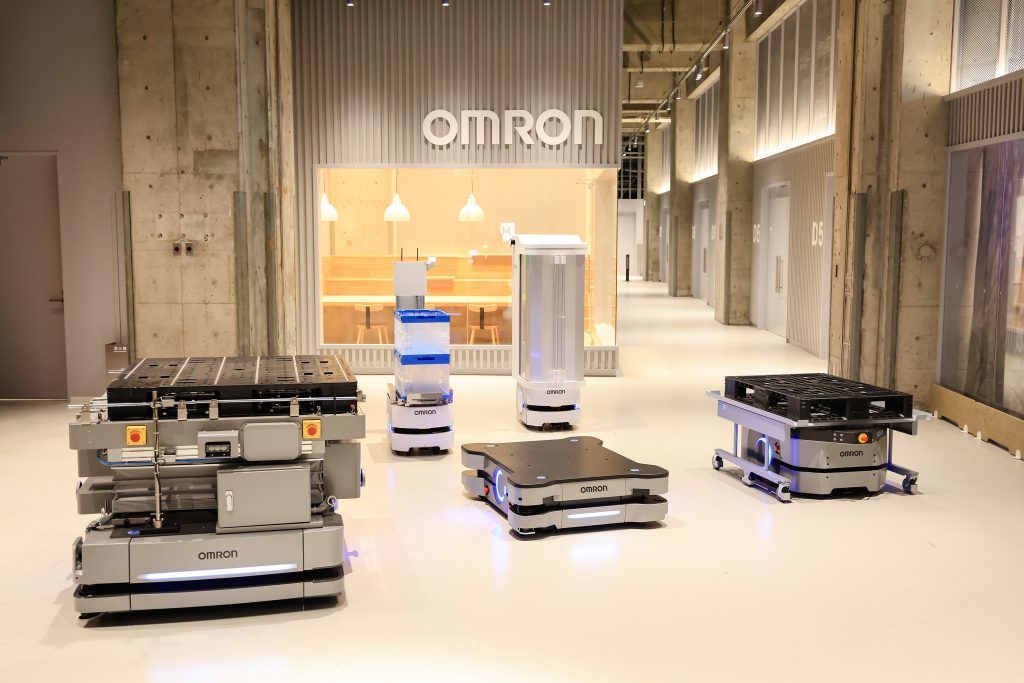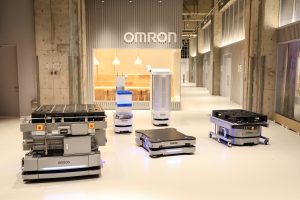
- News
- Basics
- Products
- JP Job shop
- Exhibition
- Interview
- Statistic
- PR
- Download
- Special contents
News
December 15, 2023

OMRON held a strategy briefing for its robotics business on November 1 at its development base, “AUTOMATION CENTER TOKYO POC LAB,” located in Shinagawa-ku, Tokyo. The ability to provide industrial robots, collaborative robots and autonomous mobile robots (AMR) from a single source is the strength of OMRON’s robotics business. According to Yuki Date, Senior General Manager of Solution Sales & Marketing Division, “We should break through the three barriers that hinder the introduction of robots. What are those three barriers?

Hiroshi Ujimoto, Senior General Manager of Robotics Business Division H.Q. (left) and Yuki Date, Senior General Manager of Sales & Marketing Division H.Q.
OMRON’s robot business is part of the Industrial Automation Business (IAB) Company, which handles sensors and controllers, and is one of the businesses expected to grow within the IAB Company.
By the end of this fiscal year, the company plans to launch new models in each of the categories of 6-Axis Vertically Articulated Robots, Collaborative Robots, and Mobile Robots. As a first step, the company launched a mid-size mobile robot in July 2023. Together with existing models, the lineup is now ready to offer optimal proposals depending on the application.
Hiroshi Ujimoto, Senior General Manager of the Robotics Business Division, said, “In Japan, there is a particular tendency to emphasize return on investment, and there is a strong need for easy-to-install and highly efficient solutions”.
At the briefing, the mobile robot lineup was presented using actual equipment, and the R&D being conducted in the lab was also promoted.

The mobile robot lineup shown in the lab. A jig and pallet are mounted on the robot as an image of its use.
OMRON believes that there are three barriers in the process of communicating the value of robot use: the first is the “concretization barrier,” which is the inability to have a concrete image of robot use; the second is the “verification barrier,” which is caused by concerns about mismatch with the workplace; and the third is the “implementation barrier,” which is the lack of expertise to start up and operate the equipment. “We are developing specific initiatives to address each of these barriers,” said Mr. Date, Senior General Manager of the Sales & Marketing Division.
To address the “concretization barrier,” the company provides examples of industry-specific installations on its Web site and has an extensive line of robots and a technical staff that can provide extensive support. To overcome the “verification barrier,” the company uses the POC LAB, various simulators, and actual equipment tests to conduct preliminary verification. In addition, to overcome the “implementation barrier,” the company introduces optimal system integrators from among its 170 partner companies in Japan and provides paid start-up support services. Through these initiatives, the company aims to remove barriers to robot implementation, promote the widespread use of robots, and expand its business.
By: Yuki Matsukawa
Staff Editor, SEISANZAI Japan
August 7, 2023
April 7, 2023